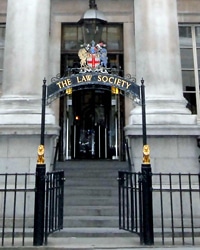The Law Society’s gender pay gap shrank last year to a median of 4.7%, much lower than the national average, but its ethnicity pay gap almost doubled to 15.6%.
There were no disability or sexual orientation pay gaps at Chancery Lane, because disabled and LGBTQ+ staff actually earned more than other workers.
The Law Society’s gender pay gap reached a peak of 16.6% in 2020, before falling to 6.8% in 2021 and 4.7% in 2022.
The society said in its 2022 pay gap report that the percentage of women who worked for it in 2022 was “slightly lower” than the previous year, with more women in the upper quartile and fewer in the lower one.
All the staff working part-time for the Law Society are female, making up 12% of female staff.
Meanwhile, the society said its ethnicity pay gap increased from 10.2% in 2021 to 15.6%.
The “most likely explanations” were that, in comparison to white staff, fewer Black, Asian and ethnic minority staff joined the Law Society as employees last year, particularly in the higher paid roles.
Further, fewer ethnic minority staff were promoted to more senior grades, or were acting up, and their pay increases were lower than white staff.
The median of LGBTQ+ staff working for the Law Society was 3.5% higher than for other staff. There is no national figure to compare this with, or figure for the previous year at Chancery Lane.
The society said: “LGBTQ+ staff appear to be slightly over-represented in the higher quartiles, suggesting that LGBTQ+ staff in comparison to heterosexual staff are being paid more.”
Median pay was also 3.5% higher for disabled staff at the Law Society. This compares with a national disability pay gap of 13.8%.
Disabled staff appeared “more represented in the lower and upper quartiles compared to the middle quartiles” at Chancery Lane.
The society said it would be “investigating and sharing” more information in the future regarding recruitment, retention and progression.
This included data on employee turnover, promotion, disciplinary and grievance processes, and exit interview data.
The society said it was also “conducting a comprehensive review of our reward approach and framework”. Addressing the pay gaps was “an explicit aim of this project”.
Ian Jeffery, chief executive of the Law Society, commented: “We’re committed to reducing our pay gaps by focusing on actions that are likely to have the widest impact.
“Our actions are also designed to further understanding of what’s causing our pay gaps and strive towards better equality, diversity and inclusion.
“We know some solutions and results may take time. We will be working hard to ensure we are implementing strategies to systematically narrow pay gaps for our valued employees in ways that are meaningful and durable.”
This is the first year that the Law Society and the Solicitors Regulation Authority have reported their pay gaps as separate entities.

















Leave a Comment